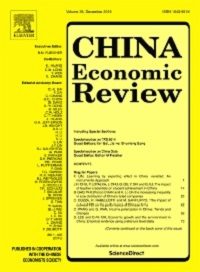On Saturday, 6 September 2014, European and Chinese experts assembled in Beijing for the second ‘High-level People-to-People Dialogue’ (HPPD). Education was highlighted as one of the priority areas for practical cooperation between Europe and China in the years to come. Maximilian Rech from ESSCA’s Shanghai campus reports.
Androulla Vassilliou, EU Commissioner for Education and Culture, and Chinese Vice-Premier Liu Yandong welcomed more than 150 experts for the second High-level People-to-People Dialogue (HPPD) in Beijing. The HPPD, launched in 2012, represents the so-called ‘3rd pillar’ of EU-China relations, along with the ‘High-Level Economic and Trade Dialogue’ and the ‘High-Level Strategic Dialogue’. With Mrs Vassilliou about to end her mandate as EU Commissioner, this second HPPD offers a good opportunity to take stock of achievements and identify challenges and opportunities for the future. Is the third pillar of cooperation yet another talk-shop or are we witnessing the legacy of a friendship between two women that will characterise soft-power cooperation between Europe and China?
The background
According to the Chinese Ministry of Education, the number of EU students in China increased from a little less than 25.000 in 2009 to more than 40.000 in 2013, a growth of almost 50% over five years. However, this number pales in comparison to the 230.000 Chinese citizens studying in the EU in 2013. The gap is slowly closing, but there is still an imbalance in terms of student exchange that has to be addressed.
The China Scholarship Council (CSC) seeks to attract European students by offering more and more opportunities for financial support. Next to national CSC contingencies, there is now an ‘EU Window’ with up to 200 scholarships being awarded by the Mission of the People’s Republic to the European Union. The Chinese Ministry of Education seeks to promote such exchange initiatives: ‘China seeks to reform the recruitment to make applications easier and wants to raise the funding per student’, says Director of the Department of International Cooperation and Exchanges, Ms TIAN Lulu.
The EU is also encouraging European students to study in China through the Erasmus+ programme. With 250.000 students studying abroad each year, Erasmus+ is the biggest student exchange scheme on the planet. Within the Erasmus+ budget for 2015, Asia will receive the largest allowance (17 million €). This money is supposed to facilitate short-term student mobility as well as long-term joint degree programmes for 2.700 students. Emphasising that student mobility has many positive effects, Mr Adam TYSON, Head of Unit at the European Commission, aims to increase this number to 6.000.
Remaining challenges
While the experts at the HPPD agreed that education is an important area of cooperation, several challenges remain. For many Chinese, the wealth of languages in Europe is a hindrance to student mobility. Therefore, the European Commission organised and financed language training programmes for Chinese professors. Since the launch of the HPPD in 2012, 18 Chinese professors spent 1 month in one of 5 European countries to acquire additional language skills. ‘Our focus is on « lesser spoken languages » in the EU and the teachers can act as multipliers of knowledge back home,’ argues Vito Borelli, Head of Sector at the European Commission. Training for Chinese interpreters is another programme that continues to be funded.
Labour market mobility and the transition from education to working life is another challenge. Not being allowed to work in China, European students face difficulties making this transition. Internships were highlighted as an important step to facilitate entry into the labour market. However, current visa regulations in China present an important obstacle. While unpaid internships can be legally pursued with a business visa F, paid internships require a work visa Z. But such work visas are very difficult to obtain, because once graduated, a European citizen has to gain 2 years of professional experience abroad before he/she may apply for a working permit in China. Ms TIAN of the Ministry of Commerce highlighted efforts to cut that red tape. A new work-study programme could offer a solution: ‘In the future, we will encourage part-time jobs in the final year of a student’s degree,’ said Ms TIAN.
Education as driver of soft-power cooperation
Education was also discussed as a driving force for soft-power cooperation between Europe and China. In particular, quality assurance in education was highlighted as a potential building bloc for collaboration. Three innovations received a lot of attention:
1. The Common European Framework of Reference (CEFR) for language provides an important standard to ensure quality of language education around the world. Ms ZHANG Junli, Director of the Division of European Confucius Institutes concurred proposing an exchange of best practices between the Chinese and European standards.
2. The European Credit Transfer and Accumulation System (ECTS) was highlighted as another opportunity for cooperation. The China-EU Tuning Joint Study Project proposed streamlining credit and quality assurance systems. In this context, ESSCA School of Management has a good record: not only does it respect international quality standards by having obtained AACSB accreditation, but it is also advancing exchange in the framework of the Alliance of Chinese and European Business Schools (ACE).
3. Finally, the ‘U-Multirank’ tool to compare the quality of universities was welcomed by the Chinese side as an important initiative. Launched in May 2014, the idea is to provide a database for students and educators to make informed decisions. ‘China is very interested in this ranking,’ said Mr CEN Jianjun, the Director General of the Ministry of Education. Increasing the number of Chinese universities in U-Multirank would strengthen the visibility of Chinese universities in Europe, but also strengthen the credibility of ranking itself, according to Mr TYSON.
The examples above provide ample opportunity for Europe and China to establish global standards for the future and thus engage in soft-power cooperation.While this cooperation is fostered top-down with the European Commission and the Chinese Ministry of Education in the driving seat, it should also be promoted in a bottom-up process by the actors of education. ESSCA’s efforts to advance quality assurance and create collaboration opportunities are a good example.
Maximilian RECH
Shanghai Programme Director & Assistant Professor in International Affairs
The EU-Asia Institute at ESSCA School of Management
maximilian.rech@essca.fr





